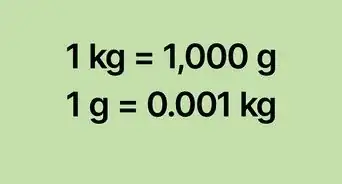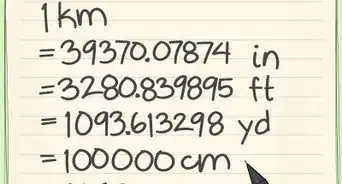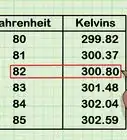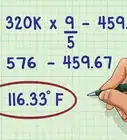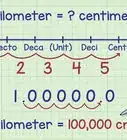wikiHow is a “wiki,” similar to Wikipedia, which means that many of our articles are co-written by multiple authors. To create this article, volunteer authors worked to edit and improve it over time.
There are 7 references cited in this article, which can be found at the bottom of the page.
This article has been viewed 56,559 times.
Learn more...
Converting Celsius to Kelvin, luckily, is easy. The Kelvin temperature scale is an absolute thermodynamic scale used commonly in the physical sciences. It uses zero as absolute zero, unlike Fahrenheit or Celsius, where there are negative numbers. In order to read temperatures over a wide variety of disciplines, you must learn to convert Fahrenheit to Celsius and Celsius to Kelvin. With practice, you may be able to do this in your head, rather than using a calculator.
Steps
Convert Celsius to Kelvin
-
1Write down the temperature in degrees Celsius. The conversion to Kelvin is remarkably easy-- all it takes is some simple addition. The following three examples will be used throughout the section:
- 30°C
- 0°C
- 100°C[1]
-
2Add 273.15 to your Celsius temperature. For example, 30 plus 273.15 is 303.15. This is all you need to do to make your conversion. Just add 273.15 and you're done.Advertisement
-
3Replace the °C with a simple K. Do not put a degree sign in, as it would be incorrect. Once you've made your calculation, simply add a K and call it a day.
Understanding Kelvin
-
1Never use the word "degree" when talking about Kelvin. The correct way to say "292 K" is simply "two-hundred and ninety-two Kelvin." Kelvin is known as the "absolute temperature," and does not use degrees.[4]
- Each unit is actually called "a Kelvin." It doesn't get two degrees hotter, but two Kelvins hotter.
-
2Know that 0 Kelvin is the theoretical point where an ideal gas has no volume. Absolute zero, or 0 K, is the point where molecules theoretically stop moving. This is the "perfect" cold. While absolute zero is not possible to create, scientists have come close. The point of the Kelvin scale is to make this sort of calculation -- absolute zero -- easier to work with.[5]
-
3Use Kelvin for scientific research. Because 0 K is the lowest temperature possible in the universe, Kelvin has no negative numbers. This makes it much, much easier to work with mathematically. You can better compare temperatures, find differences or averages, and note relationships when you don't have to work with positive and negative temperatures.
- Kelvin is also used to measure color temperature -- thus the 3000K, 6000K, etc. settings on cameras and professional lighting kits and bulbs.[6]
-
4Dive into the technical definitions of Kelvin for advanced classes. The Kelvin is defined as the thermodynamic temperature of the triple point of water. Accordingly, the number 273.15 is frequently used to convert temperatures to Kelvin. Don't worry if this explanation doesn't make much sense -- it is mostly for high-level chemists and physicists.[7]
Convert Fahrenheit to Kelvin (Optional)
-
1Convert Fahrenheit to Celsius before converting to Kelvin. You cannot go directly from Fahrenheit to Kelvin without converting to Celsius first. The Celsius to Kelvin conversion is much easier than the Fahrenheit to Celsius conversion. You will almost definitely need a calculator for this.[8]
- 86°F
-
2Subtract 32 from your Fahrenheit reading. For example, 86 minus 32 is 54. As an interesting aside, know that this is because the freezing point of Celsius is 32 less than Fahrenheit.[9]
- Multiply the number you just calculated by , or 0.5555.. For example, 54 times 0.5555 is 30. In some formulas, you may also be asked to divide by 1.8, which is the same calculation as multiplying by 0.5555. This finishes the conversion to Celsius.
-
3Add 273.15 to finish converting to Kelvin. Once you've subtracted 32 and multiplied by , you're in Celsius. Now just add 273.15 to get to Kelvin and call it a day.
Community Q&A
-
QuestionHow do I convert Fahrenheit to Celsius?
 DonaganTop AnswererSubtract 32 from the Fahrenheit number. The multiply by 5, and divide by 9.
DonaganTop AnswererSubtract 32 from the Fahrenheit number. The multiply by 5, and divide by 9. -
QuestionHow do I convert absolute zero on the Kelvin scale to the temperature on Fahrenheit scale?
 DonaganTop Answerer°F = (1.8)(K - 273) + 32. When K is zero, the formula becomes (1.8)(-273) + 32 = -491.4 + 32 = -459.4°F. (That answer is an approximation, because -273 is an approximation. The actual number is -273.15, making the actual answer -459.67°F.)
DonaganTop Answerer°F = (1.8)(K - 273) + 32. When K is zero, the formula becomes (1.8)(-273) + 32 = -491.4 + 32 = -459.4°F. (That answer is an approximation, because -273 is an approximation. The actual number is -273.15, making the actual answer -459.67°F.) -
QuestionHow do I convert Kelvin to Fahrenheit?
 DonaganTop AnswererMultiply the Kelvin temperature by 9/5, and then subtract 459.67. Thus, T(°F) = [T(K) x 9/5] - 459.67.
DonaganTop AnswererMultiply the Kelvin temperature by 9/5, and then subtract 459.67. Thus, T(°F) = [T(K) x 9/5] - 459.67.
Things You'll Need
- Calculator
- Pen
- Paper
References
- ↑ http://www.metric-conversions.org/temperature/celsius-to-kelvin.htm
- ↑ http://www.rapidtables.com/convert/temperature/how-celsius-to-kelvin.htm
- ↑ http://ww2010.atmos.uiuc.edu/%28Gh%29/guides/maps/ctof.rxml
- ↑ http://www.chemteam.info/GasLaw/Convert-Celsius-Kelvin.html
- ↑ http://www.livescience.com/39994-kelvin.html
- ↑ http://www.livescience.com/39994-kelvin.html
- ↑ http://physics.nist.gov/cuu/Units/kelvin.html
- ↑ www.ajdesigner.com/phptemperature/temperature_equation_convert_c_k.php
- ↑ www.ajdesigner.com/phptemperature/temperature_equation_convert_c_k.php
About This Article
To convert a Celsius temperature to Kelvin, add 273.15 to your Celcius temperature, then replace the C with a K and omit the degree symbol. To learn more about when to use the Kelvin temperature scale, keep reading the article!

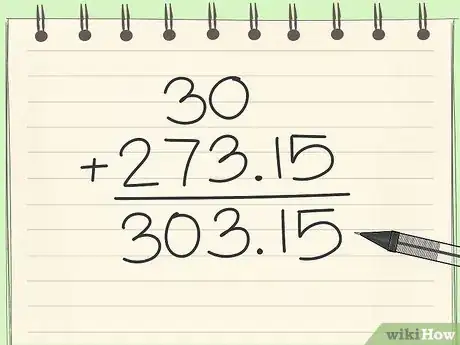










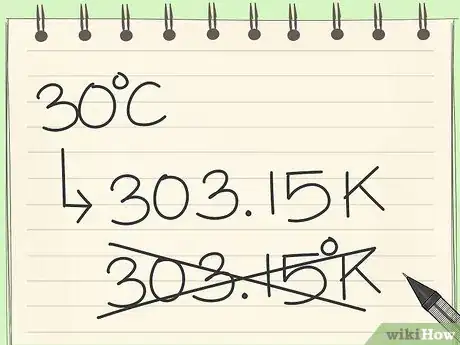

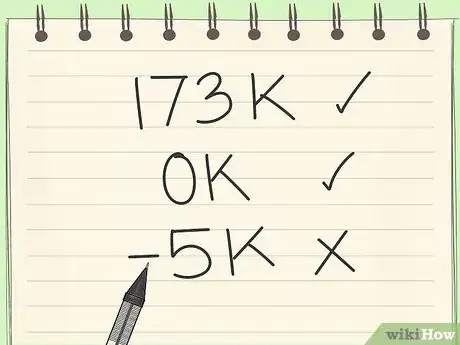


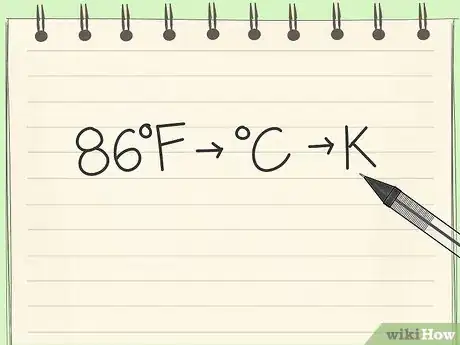





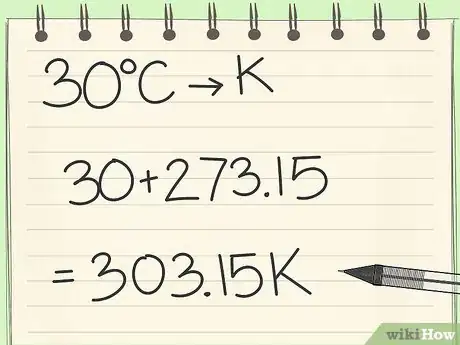
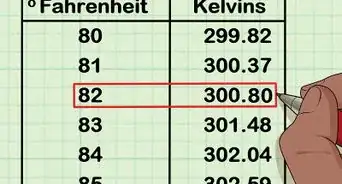
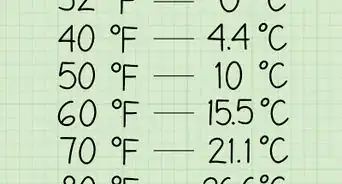
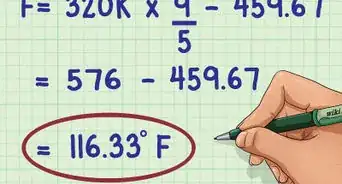

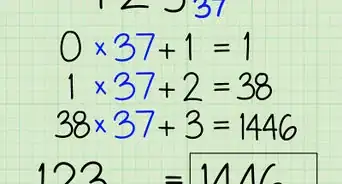
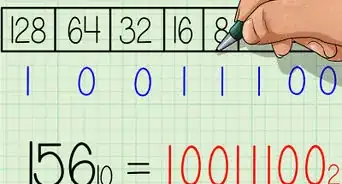
-to-Grams-(g)-Step-8-Version-5.webp)
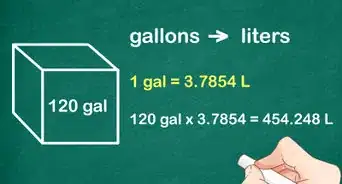
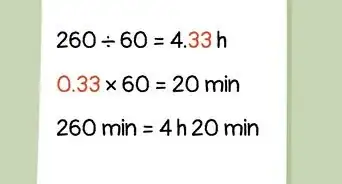
-to-Fahrenheit-(°F)-Step-6-Version-2.webp)
